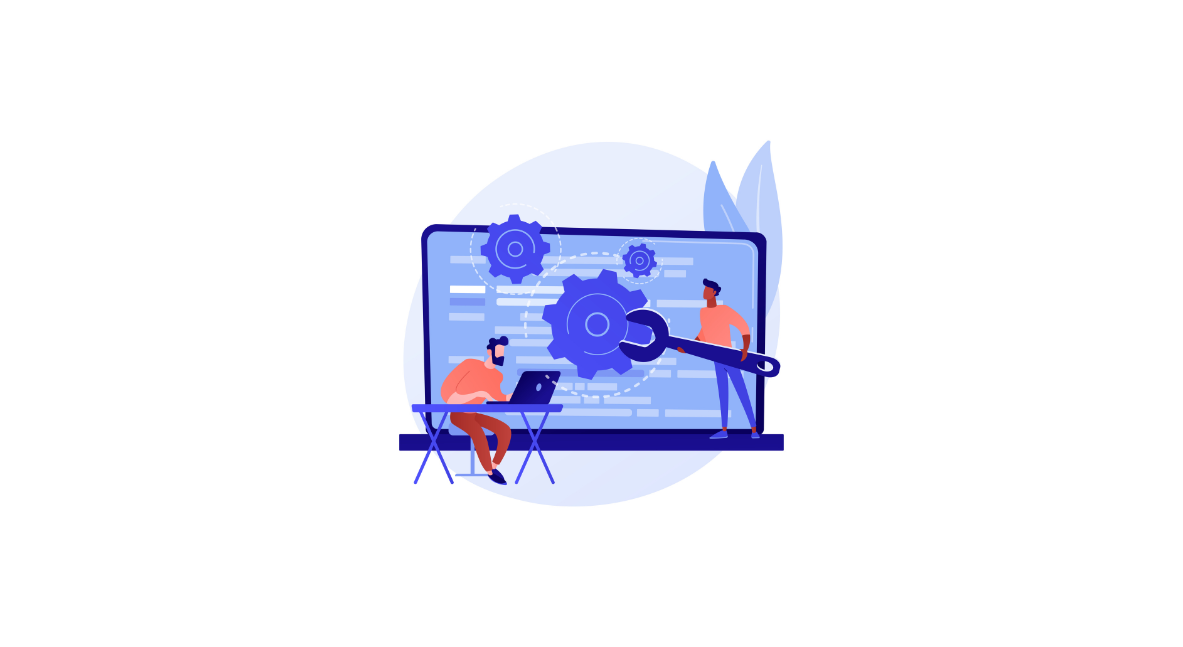Introduction to ITSM
With technology woven into every aspect of business, the seamless functioning of IT services has become indispensable. This is where IT Service Management (ITSM) steps in as a collection of policies and practices designed for the implementation, delivery, and management of IT services within an organization. ITSM serves as the compass that guides IT departments in providing value-driven services, maintaining high standards, and continuously improving service delivery.
What is IT Service?
An IT service refers to a package of technology-related solutions, tools, and support that organizations offer primarily to their employees. It encompasses a range of digital resources, such as software applications, hardware infrastructure, network connectivity, and technical assistance, all designed to fulfill specific business needs and enable seamless operations within the organization. The goal of an IT service is to provide value by facilitating the efficient use of technology and contributing to the achievement of the organization’s goals and objectives.
Importance of Effective IT Service Delivery
Effective IT service delivery is the cornerstone of an organization’s success in the digital realm. In an era where downtime can translate to substantial financial losses and damaged reputation, delivering IT services efficiently and reliably has never been more critical.
- Enhanced Productivity and Efficiency: When IT services are delivered seamlessly, employees can focus on their work without interruptions. Efficient IT service delivery ensures that technology works as an enabler rather than a hindrance, leading to improved productivity across the organization.
- Employee Satisfaction: Employees depend on IT services to carry out their work. When IT services are delivered smoothly, employees experience minimal disruptions and quick issue resolution. This translates to higher satisfaction levels and fosters stronger relationships with employees.
- Reduced Downtime and Costs: Effective IT service delivery involves proactive monitoring, rapid incident response, and efficient problem resolution. This reduces downtime, minimizing the financial impact of service interruptions and the costs associated with extended outages.
- Risk Management: With the ever-present threat of cyberattacks and data breaches, a well-structured IT service management approach helps in identifying and mitigating risks effectively. This includes robust security measures and timely updates to safeguard critical systems and data.
- Adaptability to Change: As businesses evolve, so do their IT needs. Effective IT service delivery incorporates change management processes that enable the organization to embrace new technologies and adapt to changing market conditions seamlessly.
Key Concepts of ITSM
In the intricate landscape of IT Service Management (ITSM), there are fundamental concepts that provide the foundation for a systematic and effective approach to delivering IT services. These concepts, encompassing service, process, and lifecycle perspectives, form the bedrock upon which successful ITSM practices are built.
Service, Process, and Lifecycle Perspectives
- Service Perspective: At the heart of ITSM lies the notion of service. In this context, a service refers to a means of delivering value to employees by facilitating desired outcomes without requiring ownership of specific costs and risks. It’s essential to view IT services as more than just technical solutions; they are enablers that support the organization’s goals and objectives. The service perspective emphasizes employee & customer-centricity and the continuous provision of value.
- Process Perspective: To efficiently deliver IT services, processes play a crucial role. A process is a structured set of activities designed to accomplish specific objectives. ITSM processes outline how tasks should be performed, ensuring consistency and repeatability. From incident management to change management, these processes guide the flow of work, minimizing errors, enhancing accountability, and contributing to overall efficiency.
- Lifecycle Perspective: The lifecycle approach in ITSM emphasizes that IT services have a lifecycle, akin to a living entity. This life cycle includes stages such as strategy, design, transition, operation, and continuous improvement. By considering the entire lifecycle, organizations can create and manage services with a holistic view, ensuring they are aligned with business needs and are adaptable to changes over time.
ITIL (Information Technology Infrastructure Library) Framework Overview
ITIL, short for the Information Technology Infrastructure Library, is a globally recognized framework for ITSM. Developed by the UK government, ITIL provides a comprehensive set of best practices, guidelines, and processes to support organizations in delivering high-quality IT services. ITIL is currently owned and managed by PeopleCert. ITIL’s framework is divided into five core volumes, each focusing on a different aspect of the IT service lifecycle:
- Service Strategy: This volume helps organizations define their service offerings and align them with business goals. It emphasizes the importance of understanding employee needs and the market landscape to create valuable services.
- Service Design: Here, the focus is on designing services that are efficient, effective, and aligned with the organization’s strategy. It covers aspects like service architecture, technology, processes, and metrics.
- Service Operation: Service operation covers the day-to-day management of services, ensuring they deliver the expected value. Incident management, problem management, and access management are among the crucial processes included in this core aspect.
- Service Transition: This crucial stage involves the careful implementation of new or modified services into the production environment, ensuring a seamless transition from development to operations. It focuses on managing changes effectively, minimizing disruptions, and maintaining service quality during the transition process.
- Continual Service Improvement: ITIL emphasizes the importance of continuous improvement. This volume guides on assessing service performance, identifying areas for enhancement, and implementing changes to achieve better outcomes.
In summary, the key concepts of ITSM encompass a service-oriented perspective, well-defined processes, and a lifecycle approach. The ITIL framework, with its detailed volumes, serves as a comprehensive guide to implementing these concepts effectively, helping organizations deliver IT services that are aligned with business goals, efficient, and constantly improving.
Benefits of ITSM
In the intricate web of modern business operations, Information Technology Service Management (ITSM) emerges as a guiding light, providing numerous benefits that organizations simply cannot afford to overlook. By implementing robust ITSM practices, businesses can unlock a plethora of advantages that ripple across their operations, from improved employee satisfaction to streamlined incident resolution. Let’s delve into some of the most notable benefits of embracing ITSM:
1. Enhanced Employee Satisfaction: Employee satisfaction is fundamental to a thriving workplace. Within the realm of ITSM, each service provided ultimately contributes to supporting internal employees in their roles. Embracing ITSM practices enables organizations to grasp the unique requirements of their workforce, customize services to align with those needs, and consistently fulfill commitments. The outcome? Elevated employee satisfaction, increased loyalty among staff, and a positive workplace reputation.
2. Efficient Resource Utilization: In the dynamic world of IT, resources are finite, and optimizing their utilization is imperative. ITSM introduces a structured approach to resource allocation and management. Through processes like demand management, capacity planning, and service optimization, organizations can strategically allocate resources where they are needed most, minimizing waste, enhancing efficiency, and ensuring that no resource is underutilized or overburdened.
3. Enhanced Communication and Collaboration: IT operations involve numerous moving parts, often spread across different teams, departments, and even geographical locations. ITSM emphasizes the importance of clear communication and collaboration among these entities. By fostering a culture of open communication and providing standardized communication channels, ITSM breaks down silos, reduces misunderstandings, and fosters collaboration that results in smoother service delivery.
4. Better Incident and Problem Resolution: When technical glitches occur or problems arise, swift resolution is essential to minimize disruptions and maintain operational continuity. ITSM frameworks provide a structured approach to incident and problem management. By implementing well-defined processes, organizations can quickly identify and address issues, minimizing downtime and its associated costs. Problem management goes beyond fixing immediate issues, focusing on root cause analysis to prevent recurring problems.
5. Streamlined Change Management: Change is inevitable in the world of technology. However, poorly managed changes can lead to chaos and downtime. ITSM’s change management process ensures that changes are well-planned, tested, and executed while minimizing the risks of adverse impacts. This promotes a controlled and systematic approach to change, ensuring that innovations are integrated seamlessly into the existing IT environment.
6. Alignment with Business Objectives: Successful IT operations are those that support and enhance an organization’s broader business goals. ITSM emphasizes aligning IT services with these objectives. By consistently evaluating services and ensuring that they contribute to the organization’s mission, ITSM ensures that IT investments are not just technical expenditures but strategic enablers of business success.
7. Data-Driven Decision-Making: ITSM encourages the collection and analysis of data related to service performance, incidents, changes, and more. This data-driven approach allows organizations to make informed decisions, identify trends, and proactively address potential issues. It also enables continuous improvement by providing insights into areas that require enhancement.
8. Cut Costs: Centralizing the IT stack to align with specific business needs offers a targeted approach to cost reduction. This process involves consolidating software, eliminating redundancy, and optimizing workflows. Through such measures, organizations not only enhance operational efficiency but also realize tangible cost savings by minimizing unnecessary expenditures, licensing fees, and resource redundancies.
ITSM touches upon all aspects of organizational performance, from enhanced satisfaction and resource optimization to collaboration and incident resolution. By embracing ITSM practices, businesses can harness these advantages to foster a more efficient, and resilient IT environment.
ITSM Principles
Information Technology Service Management (ITSM), is a set of guiding principles that shape the way organizations approach the delivery and management of IT services. These principles form the backbone of ITSM frameworks, ensuring that IT operations are not only efficient but also aligned with business goals and customer needs.
1. Continual Service Improvement:
ITSM embodies a holistic lifecycle approach, encompassing Service Strategy, Design, Transition, Operation, and Continual Service Improvement. Starting with aligning services to strategic goals, it progresses through designing efficient and valuable services, ensuring seamless transitions, managing operations, and embracing ongoing enhancement through performance assessment and iterative improvements.
2. Focus on Service Value and Business Objectives:
At the core of ITSM is the understanding that IT services exist to create value for employees and the business as a whole. IT services should not be seen as technical commodities but as enablers of business success. Every decision made in the realm of ITSM should be driven by the desire to enhance employee satisfaction, support business objectives, and contribute positively to the organization’s overall strategy.
3. Integration of People, Processes, and Technology:
Effective ITSM is not solely about technology; it’s a harmonious integration of people, processes, and technology. People are at the heart of IT operations, from end-users to IT staff. Processes provide structure, ensuring consistency and repeatability. Technology acts as the enabler, automating tasks, and enhancing efficiency. Successful ITSM aligns these three elements seamlessly, promoting collaboration, accountability, and streamlined operations.
4. Agile and Adaptive Approach:
In a rapidly evolving technological landscape, flexibility is key. ITSM principles encourage an agile approach, allowing organizations to adapt to changing circumstances, technology trends, and organizational needs. This flexibility enables IT to quickly respond to market demands and organizational shifts, ensuring that services remain relevant and effective.
5. Measurement and Continuous Improvement:
Measurement and data analysis play a crucial role in ITSM. By tracking key performance indicators (KPIs), organizations can assess service performance, identify areas for improvement, and make informed decisions. This data-driven approach is vital for ongoing enhancement, enabling organizations to address issues promptly and optimize processes to achieve better results.
Components of ITSM
Within the expansive landscape of IT Service Management (ITSM), several key components work together to ensure the seamless delivery, management, and improvement of IT services. These components form the building blocks of a well-structured ITSM framework, each playing a unique role in enhancing the efficiency and effectiveness of IT operations.
1. Service Desk and Incident Management: The service desk is the frontline connection between IT and users, acting as a central point of contact for reporting issues, requesting assistance, and seeking information. Incident management is a crucial process that focuses on swiftly identifying, prioritizing, and resolving disruptions to IT services, ensuring minimal impact on users and the organization. It involves tracking incidents, categorizing their severity, and following established procedures to restore normal service operations promptly.
2. Change and Problem Management: Change Management addresses the continuous evolution of technology, ensuring controlled and planned execution of modifications while minimizing disruptions. Meanwhile, Problem Management delves deeper, identifying root causes of recurring incidents through analysis and proactive solutions. Together, they foster innovation, stability, and reliability, enhancing overall IT service quality.
3. Asset and Configuration Management: Configuration management involves creating and maintaining a comprehensive repository of information about the organization’s IT assets, including hardware, software, network components, and their relationships. This knowledge, known as the configuration management database (CMDB), helps in managing and controlling changes, understanding dependencies, and making informed decisions. Configuration management ensures accurate, up-to-date documentation of the IT environment, facilitating effective troubleshooting, planning, and risk assessment.
4. Release Management: Release management governs the process of introducing new or modified services, applications, or hardware into the IT environment. It encompasses planning, testing, and deploying releases while ensuring minimal disruptions to ongoing operations. By coordinating different stages of the release lifecycle and mitigating potential risks, release management supports the efficient integration of changes while maintaining service stability.
Implementing ITSM
Implementing IT Service Management (ITSM) practices is a transformative journey that requires careful planning, collaboration, and a keen understanding of the organization’s needs and objectives. Here’s a comprehensive look at how to adopt ITSM practices:
- Assessment and Goal Setting: Begin by assessing the organization’s current IT processes, identifying pain points, and setting clear goals for ITSM implementation. Define what you aim to achieve, whether it’s enhanced satisfaction, streamlined incident resolution, or better change management.
- Framework Selection: Choose an ITSM framework that aligns with your organization’s needs. Popular frameworks include ITIL, COBIT, and ISO/IEC 20000. Tailor the framework to fit your organization’s size, industry, and objectives.
- Stakeholder Engagement: Involve key stakeholders, including IT staff, management, and end-users, in the process. Their insights and buy-in are essential for successful implementation.
- Process Design and Documentation: Design and document ITSM processes based on the chosen framework. Define workflows, roles, responsibilities, and escalation paths. Ensure the processes are clear, logical, and well-communicated.
- Training and Awareness: Provide training to staff on the new processes and tools. Create awareness about the benefits of ITSM and how it contributes to the organization’s success.
- Technology Alignment: Select and implement ITSM tools that support your processes. These tools facilitate automation, reporting, and tracking, enhancing the efficiency of IT operations.
- Monitoring and Improvement: Continuously monitor the implemented processes, gather feedback, and measure key performance indicators (KPIs). Use these insights to refine and enhance your ITSM practices over time.
Measuring and Monitoring ITSM Success
In the world of IT Service Management (ITSM), success is not merely a subjective notion; it’s a quantifiable achievement driven by well-defined metrics and informed decision-making. The ability to measure and monitor the effectiveness of ITSM practices not only validates their impact but also guides continuous improvement efforts. Here’s a look at key performance indicators (KPIs) for ITSM and the significance of data-driven decision-making.
Key Performance Indicators (KPIs) for ITSM:
- Incident Response Time: The time taken to acknowledge, prioritize, and resolve incidents. A shorter response time indicates efficient incident management and minimizes disruptions.
- First Call Resolution (FCR) Rate: The percentage of incidents resolved during the first interaction with the service desk. A high FCR rate signifies effective support and user satisfaction.
- Change Success Rate: The percentage of changes that are implemented successfully without causing service disruptions. A high success rate reflects effective change management practices.
- Problem Resolution Rate: The rate at which recurring problems are resolved permanently. A higher rate indicates effective problem management and improved service stability.
- Service Availability: The percentage of time services are available for users. High service availability is a key indicator of service quality.
- User Satisfaction: Measured through surveys or feedback mechanisms, user satisfaction reflects how well IT services meet user expectations and needs.
- Mean Time to Repair (MTTR): The average time taken to resolve incidents. A lower MTTR indicates faster incident resolution and reduced downtime.
- Change Lead Time: The time taken from requesting a change to its implementation. A shorter lead time demonstrates efficiency in change management processes.
Importance of Data-Driven Decision-Making:
Data-driven decision-making is the backbone of successful ITSM. Here’s why it matters:
- Accuracy and Objectivity: Data provides accurate insights into performance, eliminating guesswork and biases. It offers an objective view of operations and areas for improvement.
- Identification of Trends: Data analysis identifies patterns and trends, enabling proactive problem-solving and the prevention of potential issues.
- Evidence-Based Planning: Data helps in strategic planning and resource allocation. It guides investment decisions and supports justifications for process improvements.
- Continuous Improvement: Regular analysis of KPIs allows organizations to continuously refine processes, optimizing service quality and operational efficiency.
- Real-time Insights: Data enables real-time tracking of service performance, allowing swift responses to deviations from desired outcomes.
- Performance Accountability: Data-based metrics hold teams accountable for their performance, fostering a culture of responsibility and excellence.
- Communication and Transparency: Data provides a common language for discussing performance across teams and management levels, fostering transparency and effective communication.
Measuring and monitoring ITSM success through well-defined KPIs empowers organizations to assess their performance objectively, make informed decisions, and continuously enhance their IT services. Embracing data-driven decision-making ensures that ITSM efforts are aligned with business goals, employee needs, and a commitment to delivering high-quality services.
Conclusion
As organizations increasingly rely on technology to drive their operations, ITSM emerges as a linchpin for success. It’s more than just a set of practices; it’s a mindset that focuses on delivering value, optimizing processes, and fostering collaboration. ITSM ensures that technology serves as an enabler rather than a barrier, enhancing employee experiences and supporting the achievement of business objectives. To experience the power of efficient ITSM in action, you can explore tools like HappyFox Service Desk, which exemplifies how well-orchestrated ITSM practices can streamline operations, improve communication, and deliver exceptional user experiences. Book a demo to witness firsthand how ITSM can elevate modern IT operations.








